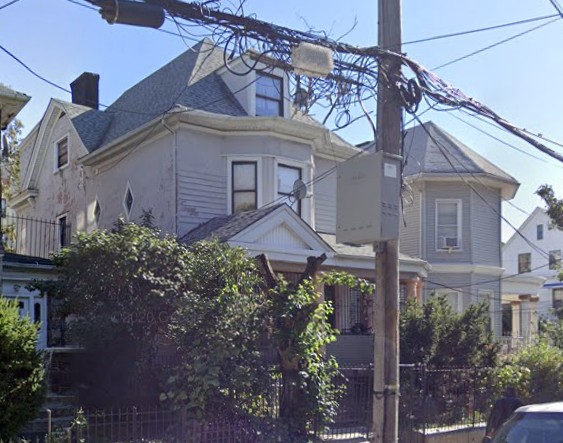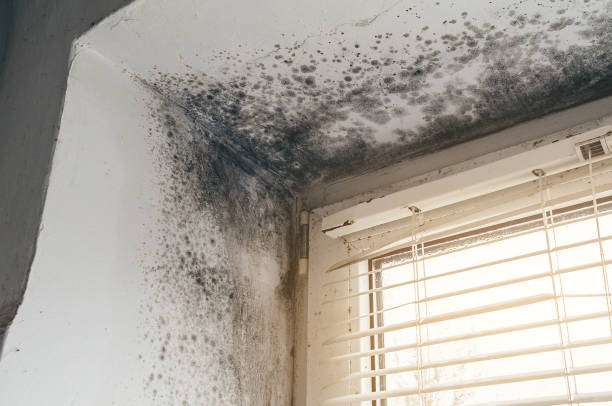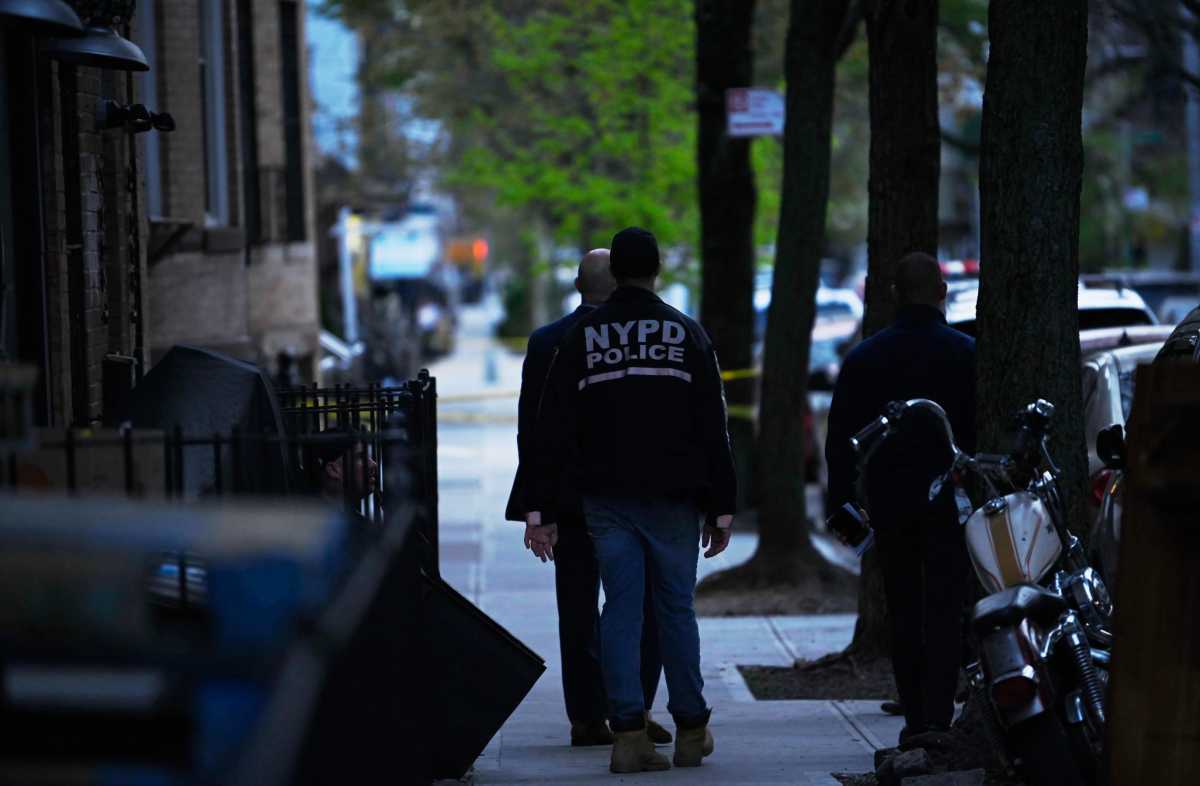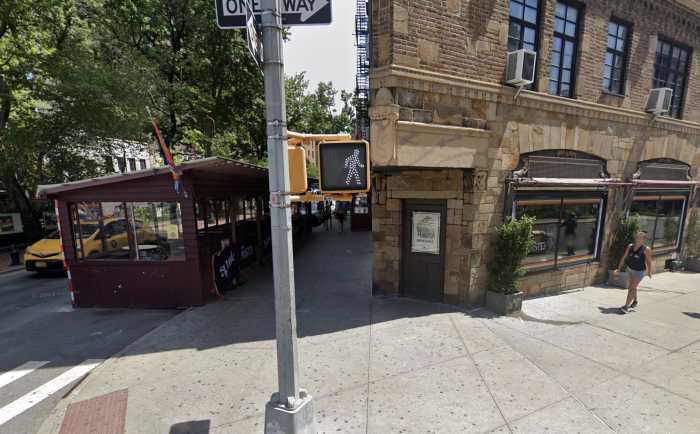Residents of Jamie Towers, a Mitchell-Lama cooperative in the Soundview neighborhood built in 1966, say their tap water is brown and sulfurous, with no resolution in sight despite years of battling management both in and out of court.
In Maxine Breeden’s apartment at 2070 Seward Avenue—one of four buildings in the development—the water quality was poor enough to prompt the Department of Housing Preservation and Development (HPD) to issue three class C violations on Jan. 9. Inspectors documented “discolored water” flowing from the kitchen, bathroom sink, and bathtub faucets, according to agency records. Class C violations, the most severe category, are deemed immediately hazardous and required correction by Jan. 16.
However, the problem remains unresolved—and HPD issued new violations during a Feb. 27 reinspection. Full details of the violations were not yet available as of publication.
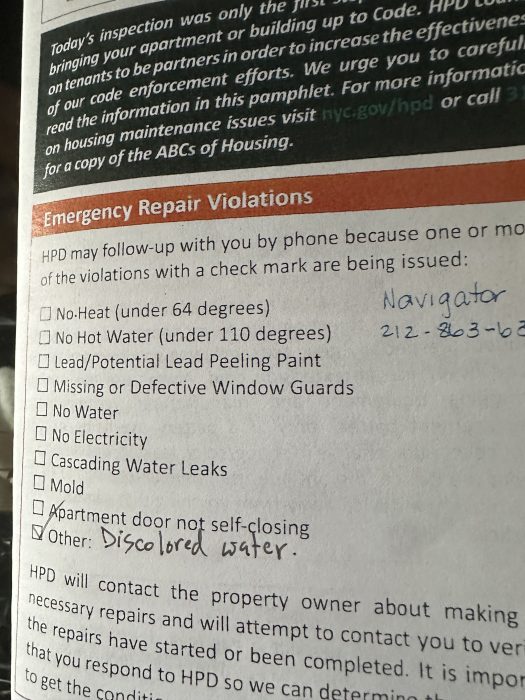
Breeden’s apartment has a history of water quality issues. HPD records show two unresolved Class B violations from July 28, 2022, citing “dark rusted water flow with heavy sediment.”
The tainted water appears to be a catalyst for other problems, as HPD issued additional violations on Jan. 9 for staining and peeling of the bathtub enamel and bathroom wall tiles.
Breeden’s complaints echo those of many Jamie Towers residents, who say essential services have deteriorated even as maintenance costs continue to rise.
For Breeden, 60, the water problems have turned her home into a nightmare. She purchased her apartment in 2018, envisioning it as her permanent retirement home. She had considered moving to Co-op City but chose Jamie Towers to be closer to her mother. After settling in with her husband, she was later elected president of the shareholders’ board.
But the water issues quickly emerged, and with no meaningful solution in sight, she now regrets her decision.
“Had they told me [about the water problems], I never would have come,” she said.
Rising costs
Breeden, like other residents, is frustrated by the skyrocketing cost of living at Jamie Towers. Maintenance fees have surged more than 60% over the past two years, yet residents say conditions have deteriorated.
The Bronx Times has previously reported on steep increases in monthly maintenance costs, which residents claim coincide with declining conditions. When the Bronx Times visited last fall, residents described a growing list of grievances, including unpainted hallways, cracked walkways, vehicle break-ins and mold.
Breeden, now paying $2,300 per month—$500 more than last year—hoards bottled water and showers at the YMCA or at relatives’ homes.
“Can you imagine paying that and not being able to bathe in your own house?” she said.
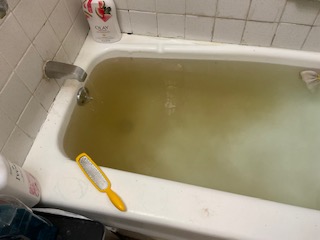
Going to court
At aging, large-scale developments like Jamie Towers, built in 1966, repairing water systems is neither simple nor cheap. Longstanding infrastructure problems are common among the Mitchell-Lama developments, many of which date back to the program’s inception in the 1950s.
In the city as a whole, the cost of maintaining housing has shot up in recent years, as insurance and labor costs have risen nationwide. Because Jamie Towers residents are shareholders and not renters, at least some of those increased costs end up passed on to them.
State investigations have shown that Jamie Towers is not the only development struggling to balance shareholders’ costs with the need for expensive repairs.
A June 2023 audit by State Comptroller Thomas DiNapoli revealed hazardous conditions at four Mitchell-Lama properties, including Jamie Towers. At these buildings, inspectors found partially collapsed ceilings, faulty self-closing doors, broken elevators, cracked sidewalks and mold, as well as evidence of financial mismanagement.
Breeden has taken to the media and sued the development and management in Bronx housing court four times about the cleanliness and safety of the water.
A judge ruled in 2023 that “the respondents had been aware of the dark rust water conditions for several years” and were slow to hire an engineer to develop a clear plan for repairs.
Also in 2023, the development was ordered to pay a fine of $5,280 each day that tenants were unable to use the water. Management paid the fine for an unknown amount of time — but Breeden said those costs were passed on to shareholders and the problem persisted. She provided the Bronx Times with documentation of these rulings and other documents critical to this story.
The State Division of Housing and Community Renewal (DHCR), which oversees Jamie Towers and other Mitchell-Lama developments, told the Bronx Times via spokesperson that it previously directed the housing company to hire an engineering firm to assess and draft recommendations to address the water conditions in Building 2, where Breeden lives.
In the meantime, she is taking to the courts again — this time, Bronx Supreme Court, where she opened a case in 2023 against DHCR, the Jamie Towers housing corporation, previous management company First Service Residential and current management company Maxwell-Kates. DHCR said the agency cannot comment on ongoing litigation.
‘This is my life’
Breeden told the Bronx Times that the current management company, Maxwell-Kates, has been trying to improve the water situation but yielded few results.
HPD inspected her apartment in January as part of management’s effort to clear existing HPD violations throughout the building, which could possibly release government-allocated funds currently being held by DHCR, according to Breeden, based on her knowledge as shareholder board president.
But when HPD came to her apartment on Jan. 9, the inspector kept the prior water violations and upgraded them to the highest level.
According to Breeden, the inspector ran the tap water and said, “Oh my God. Is it like this every day?”
“I told him, ‘This is my life,’” she said.

Breeden doesn’t trust the tap water for nearly any use. She said it can take up to an hour for it to run clear, if it does at all. Breeden bathes mainly at relatives’ homes or at the YMCA and uses only bottled water for cooking and preparing food. It’s not worth ruining her rice or pasta when the brown water spurts out, she said.
Breeden estimated she spends $160 per month on bottled water for herself, her husband and their dog. She drives to New Jersey to buy large jugs, always keeping at least eight on hand
Residents elsewhere in the development don’t trust their water either.
Phyllis Gray, who lives in Building 1, said the water is worse in Building 2 because it originates there before flowing to the other three. Still, Gray said her water is consistently “cloudy,” and like Breeden, she buys bottled water for drinking, cooking and brushing her teeth.
Gray, who has lived at Jamie Towers for over 40 years, said buying water is a financial hardship on her fixed income — but she would gladly pay more to actually solve the problem.
Having clean running water “is the basis of your existence,” she said.
Attempts have been made to improve the issue, including in November 2023 when management installed a filtration system at a cost of over $63,000. But no solution has worked long-term, especially not in Breeden’s building.
Despite many complaints to management, HPD, DHCR, media outlets, elected officials and courts, current management has said that nothing can be done.
In a Jan. 14 email to Breeden, manager Frank Fish, who no longer works at the company, said the brown water issue could not be fixed “without changing out all the pipes.”
A local engineering firm, Lawless and Mangione, agreed with this assessment when inspectors visited Jamie Towers in September 2024. The company had serviced the property for years and concluded, based on walk-through inspection, that the majority of piping seemed to be original to the 1960s-era building.
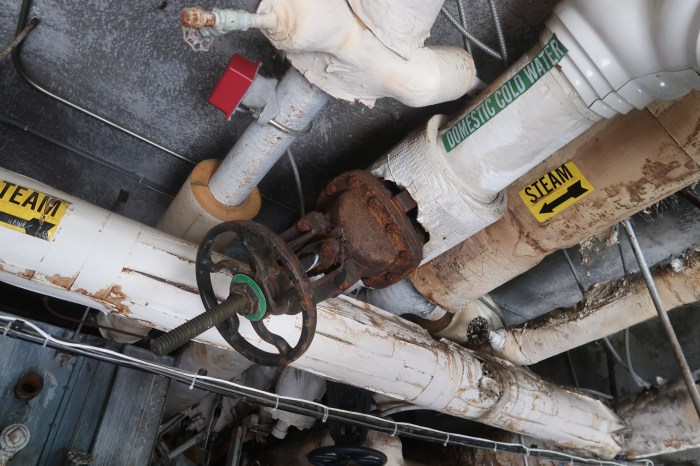

Breeden accompanied engineers during the walk-through and took photos of the gnarled, rusted piping. The engineers’ report said that if galvanized piping becomes corroded, the only solution is to replace it with copper piping.
The company also said the existing hot water filtration system was likely inadequate to handle the flow from all four buildings and that a system they previously recommended for the hot water system was inadvertently placed on the cold water system.
The inspector recommended various other water filtration systems (one costly option and one cheaper but more high-maintenance option) and also said management should develop a plan to inspect and replace all galvanized water pipes and black iron valves in the buildings.
But Fish, who was the main Maxwell-Kates liaison to residents, resigned not long after notifying Breeden that nothing could be done, she said. The Bronx Times did not receive a reply from two Fish nor two other Maxwell-Kates staffers or through the company’s general contact form.
“Even with all the shaming we’ve done, there’s still no fix,” said Breeden.
Lab testing
Breeden has turned to independent water testing, at her own expense, to get at the root of the problem and understand potential health risks. However, tests performed at Jamie Towers showed somewhat conflicting results.
A water test ordered by management and performed by ALC Environmental concluded in November 2024 that the results were all within satisfactory range. The company tested levels of bacteria, lead, copper, iron, chlorine, conductivity and pH and found no issues.
“No further action is recommended,” concluded the report reviewed by the Bronx Times. “There are no indications of contaminants in the building’s drinking water system.”
Meanwhile, Breeden has had her water tested four separate times at $250 to $300 each by the lab logistics company Simple Labs, which connects consumers with certified water testing and other environmental tests.
The company examines tens of thousands of water samples per year from across the country and issues user-friendly reports to customers, according to Jamie Coupaud, a spokesperson for Simple Labs.
The company uses a “conservative” and “purely health-based” (non-legally enforceable) scoring system based on the most sensitive populations, including babies, seniors, pregnant people and people with compromised immune systems. It bases its standards on federal EPA drinking water guidelines and other academic and scientific research.
The Bronx Times spoke with Coupaud and Samantha Bear, a senior research scientist with Simple Labs, about Breeden’s tap water results, which revealed several elements exceeding recommended health-based thresholds.
According to Bear, the bottom line is that while contaminants in Breeden’s water do not exceed legally enforceable limits, some greatly fail common aesthetic guidelines, which “clearly indicate that these folks would be having a real bad experience with this water,” she said.
Some elements that cause odor, color, and taste concerns could also have long-term health impacts, said Bear.
She said metal contaminants “probably leeching from the pipes or the faucets” seem to be the biggest issue, which was no surprise, given the building’s age.
Overall, Simple Labs gave Breeden’s water a “Tap Score” of 59 out of 99, which Bear called “not great” and of “medium concern” in terms of health risk. But based on aesthetics, there is no way anyone would trust the water, she said.
“I wouldn’t drink it, honestly,” said Bear. “The water’s probably black. That’s wild. … They need to deal with that.”
She noted high levels of manganese, a naturally-occurring element that impacts the taste, odor and color of water. At high levels, manganese can pose neurological health concerns, especially for infants and the elderly. Dark-stained sinks like Breeden’s are a common indicator of the presence of manganese.
Although the EPA says levels of up to 0.300 mg/L are safe to drink, much lower concentrations can cause aesthetic complaints, so the agency set a “secondary guideline” of 0.05 mg/L.
Two of Breeden’s water tests show manganese levels far exceeding that standard, with 3.3 mg/L in January 2024 and 6.08 in March 2024. When tested again in October 2024, much lower levels of 0.246 mg/L were detected. But as of publication, Breeden still has brown tap water.
Bear also pointed to the presence of low levels of lead in Breeden’s water, which registered at 0.0088, 0.00103, 0.0017 and 0.0012 mg/L across the four tests.
The Environmental Protection Agency (EPA), which sets legal limits of contaminants in drinking water, says there is no safe level of lead exposure.
While lead is known to cause developmental problems in infants and children, it can also cause kidney issues or high blood pressure in adults who drink lead-contaminated water over many years, according to New York State Health Department drinking water guidelines. Although Breeden’s tap water lead levels are low, Bear said it is still a concern given the metal’s biocumulative effect.
Bear noted very high iron levels detected in two of Breeden’s four tests. The New York state standard is 0.3 mg/L, but Breeden’s water tested once at 0.914 mg/L and another time at 3.4 mg/L.
Although iron is an essential nutrient, consuming water with very high levels of iron can cause stomach pain, nausea, vomiting, diarrhea and constipation, according to the state Department of Health.
Bear said many of the water problems at Breeden’s apartment are typical of aging plumbing systems and that no contaminants registered at illegal levels.
But at minimum, the aesthetic concerns “should be dealt with, because you can’t be giving people black and brown water, and it’s obvious why that’s happening,” she said.
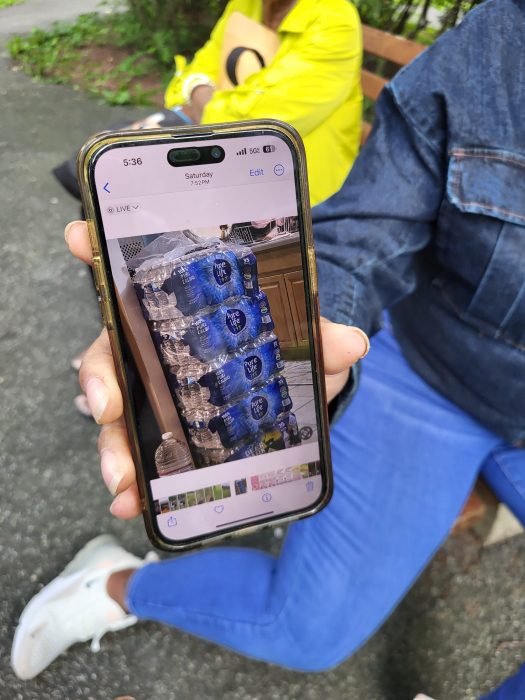
Nowhere else to go
Even if the water isn’t imminently deadly, Breeden and others worry about the long-term effects — especially since the issue is systemwide and there seems to be no plan to address it.
The bad water, among other concerns and rising monthly costs, has Breeden, Gray and others wondering if their time at Jamie Towers is up.
At the development, neighbors are leaving left and right, and 68 of the 624 total units are empty, Breeden said.
Both Breeden and Gray are retired and living on fixed incomes, as are many other residents. Moving out of Jamie Towers wouldn’t be easy, but if maintenance charges go up again this year while the water remains untrustworthy, Breeden said she will have to choose between paying for bottled water and staying there.
“How can I move? How can I survive?” she said.
Most other housing options in New York City are even more expensive than Jamie Towers, said Gray. “We’re still the best deal in town.”
She said she loves living at the place that has been her home for four decades. “It’s a community where people really care for each other,” Gray said.
But nowadays, she said, residents are afraid to do laundry or go out at night because there is only one security guard patrolling all four buildings. People are worried about future maintenance increases and high grocery prices. “The amount of anxiety — unbelieveable.”
For Breeden, the stress of living with poor water quality and leading the fight for better conditions at Jamie Towers — with limited success thus far — has left her clinically depressed, but still determined.
“It absolutely brings me to tears,” she said. “How did I get caught up in this?”
Reach Emily Swanson at eswanson@schnepsmedia.com or (646) 717-0015. For more coverage, follow us on Twitter, Facebook and Instagram @bronxtimes


